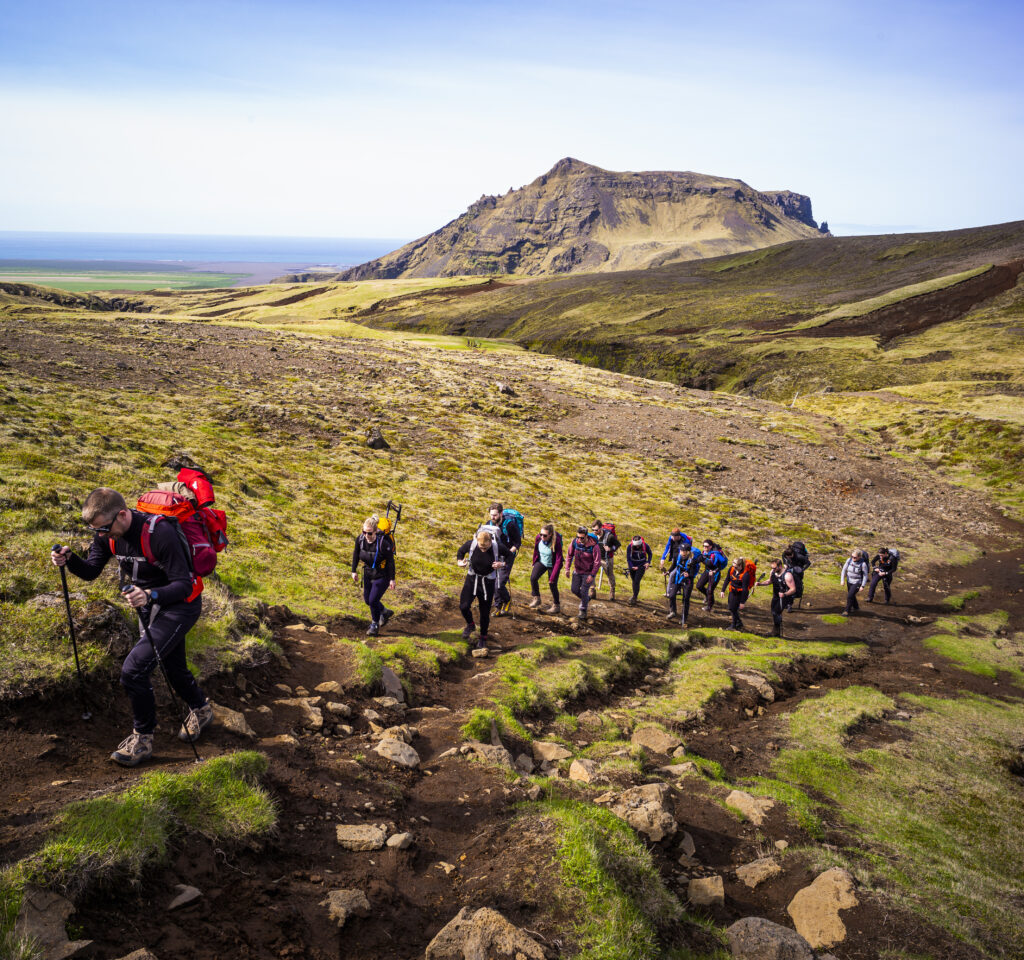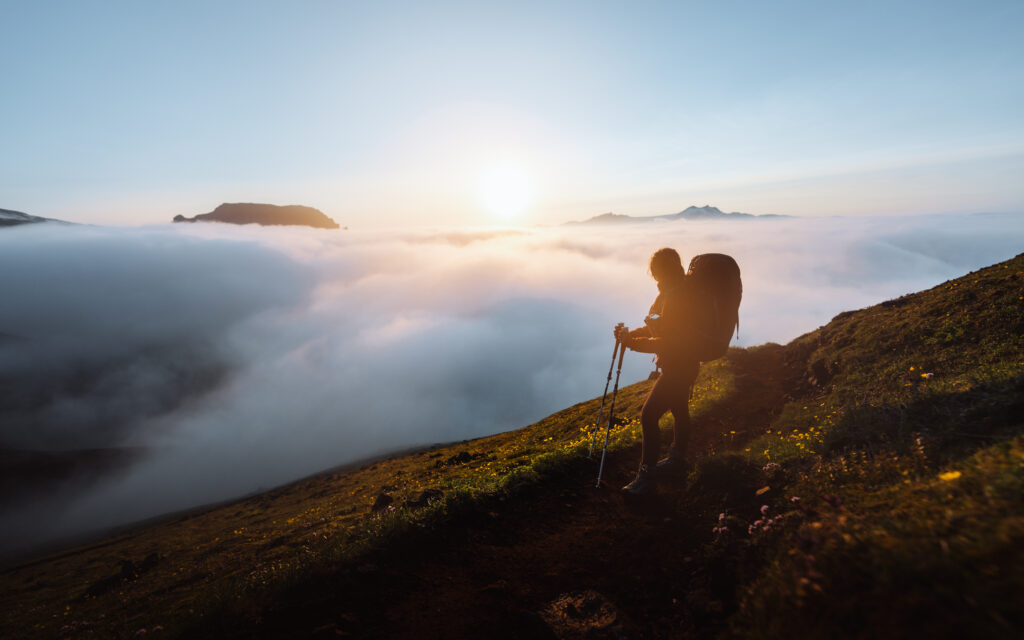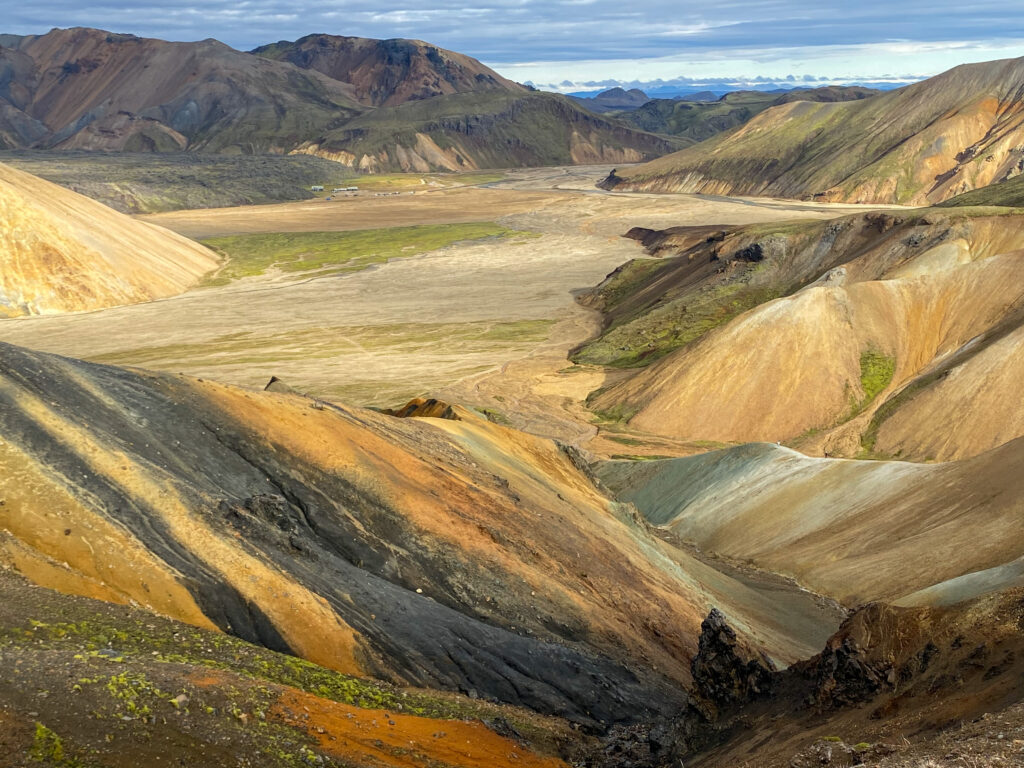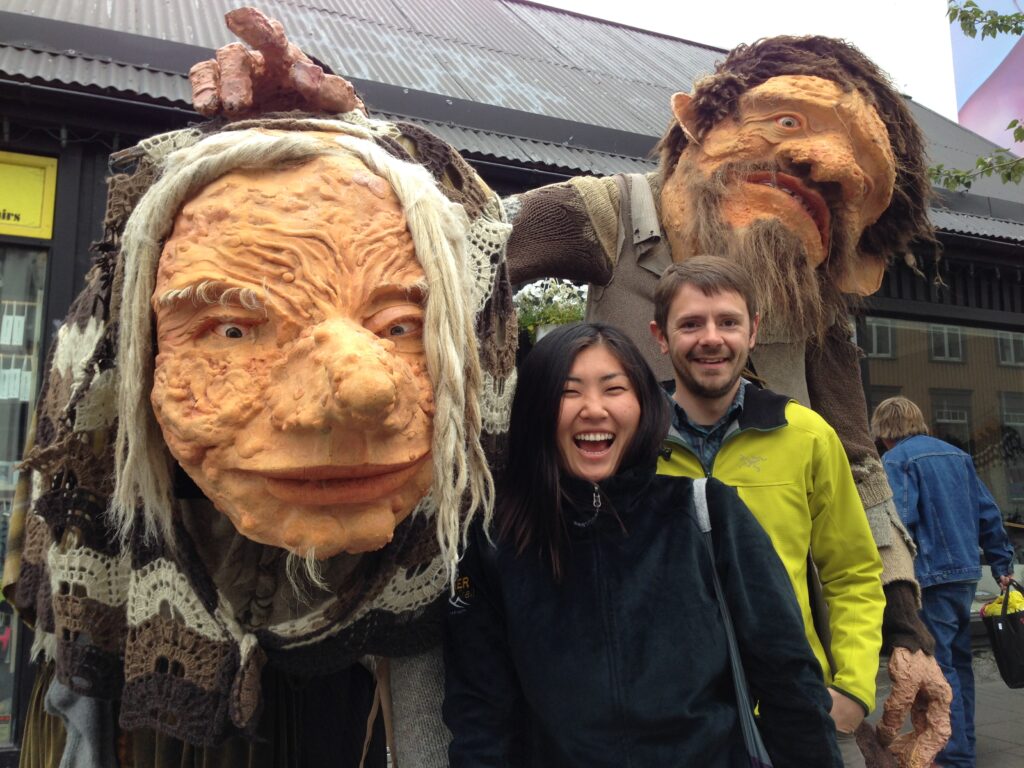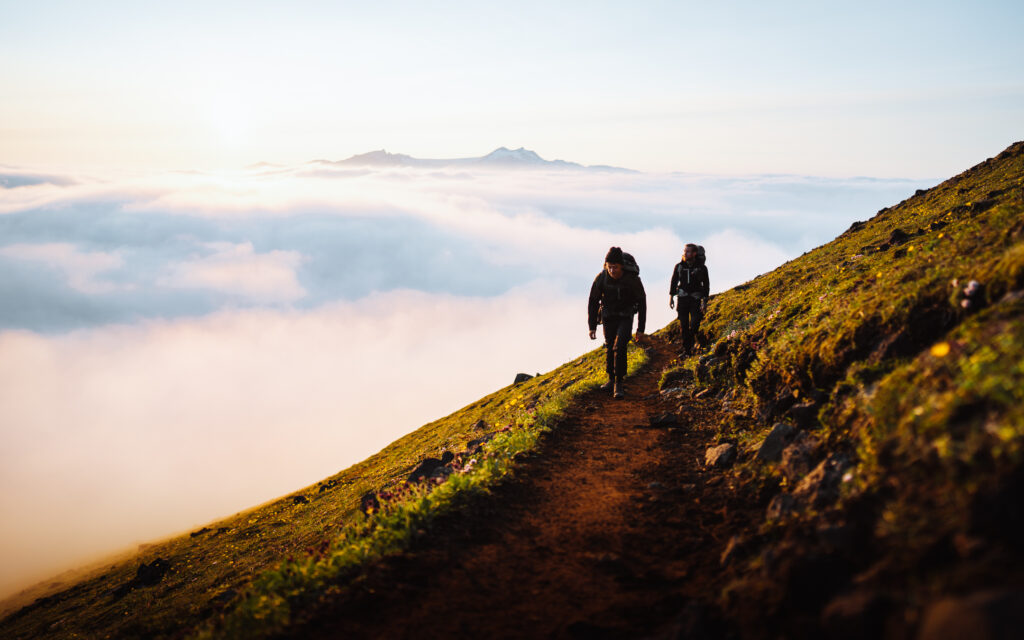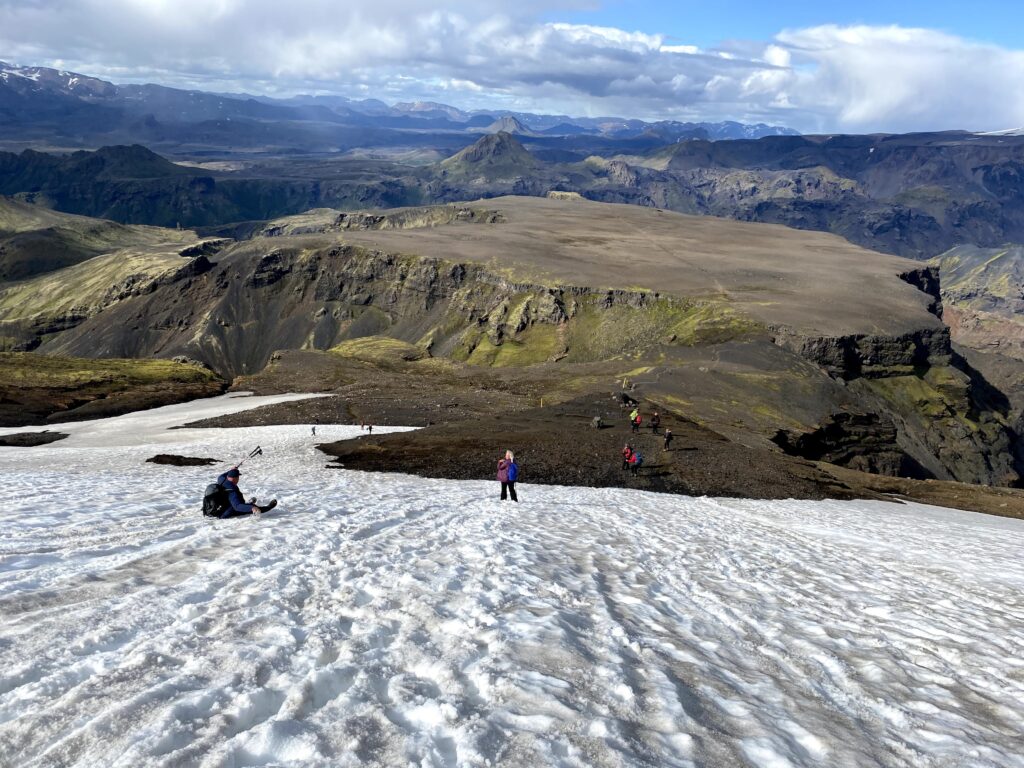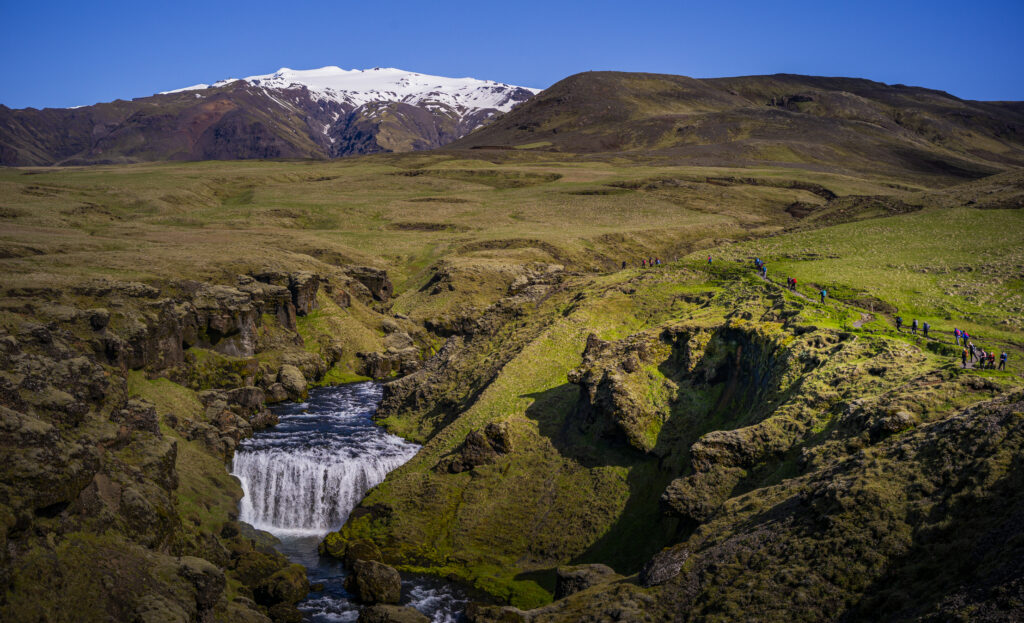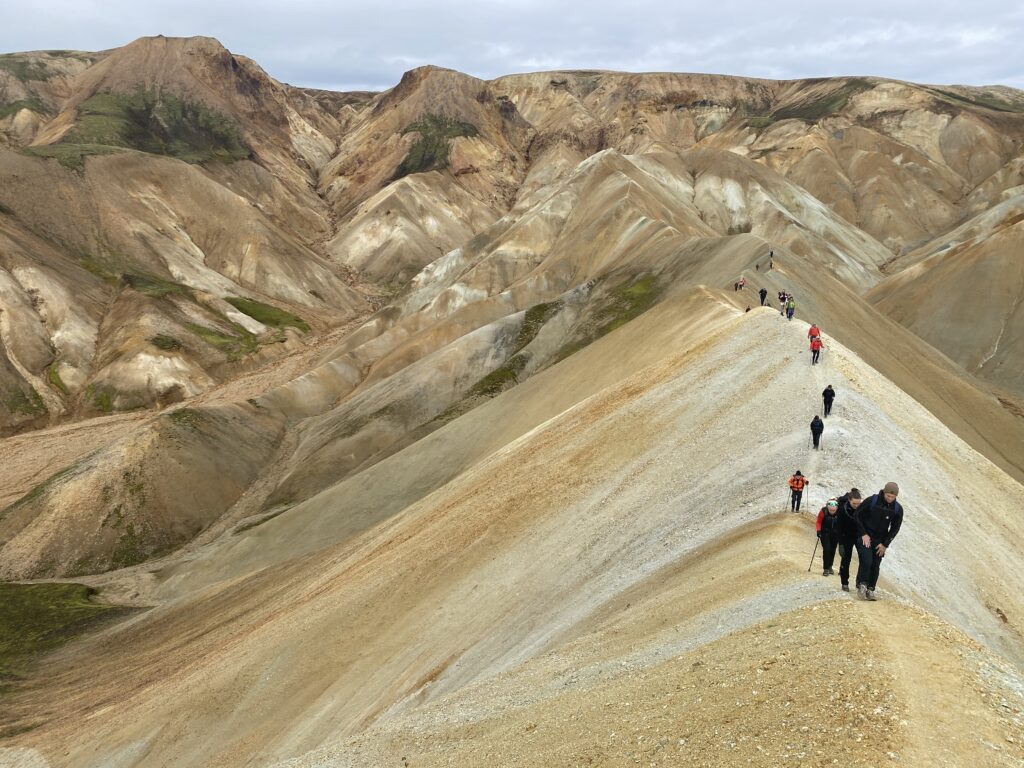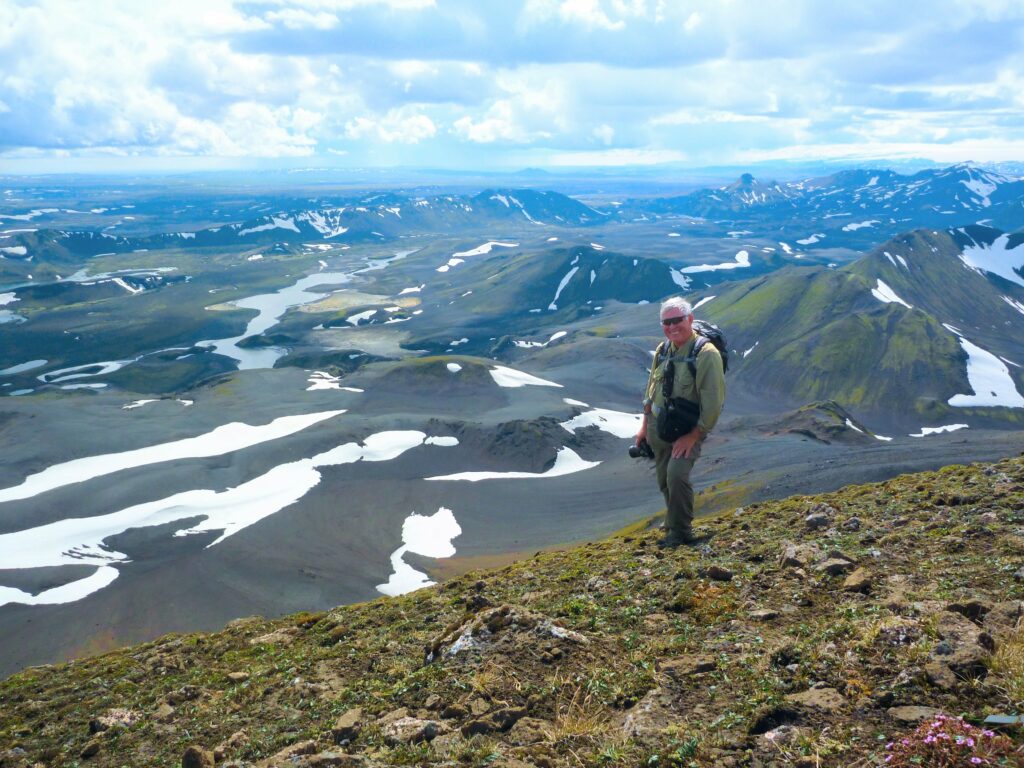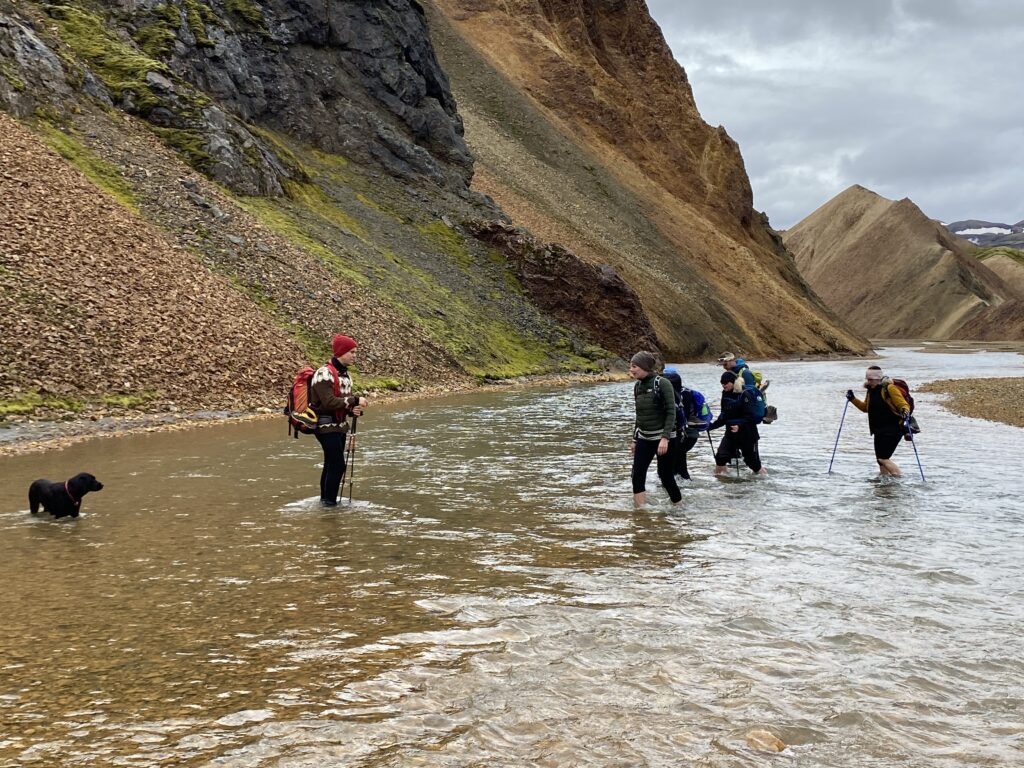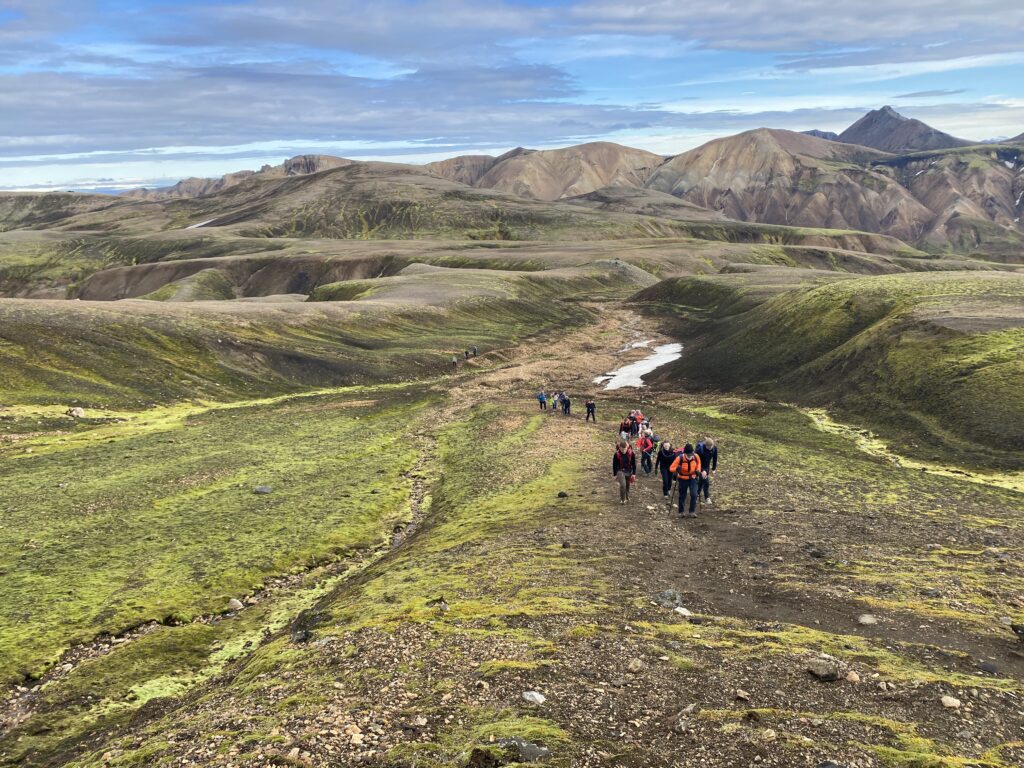International:
North America:
Menu

THE KINGS OF KILIMANJARO
International:
North America:
- Home
- Kilimanjaro Climb
- Kilimanjaro Planner
- Other Treks
- About Us
- Dates + Prices + Booking
- Contact
International:
North America:

THE KINGS OF KILIMANJARO
International:
The TREK
11 Days
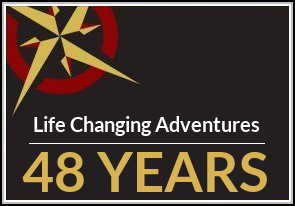
In this land of fire and ice the forces of nature have collided and created a truly awe-inspiring world. As you traverse the rugged terrain, you’ll feel the rush of the Arctic wind on your face and the crunch of the rocky path beneath your feet.
We trek through Fjallabak, a wild and rugged wilderness where the earth’s crust dates back to a time before humans walked the planet. Here, the volcanoes rage and the glaciers flow, carving deep valleys and forming mighty rivers that flow to the sea. This is a place of raw, primal beauty. But the true highlight is the sense of freedom and adventure that comes with it. Whether tackling a challenging trail or exploring a hidden valley, each step brings you closer to the heart of this wild and magical land.


















































































Iceland
A True Adventure
We set out on a journey through the rugged, wild landscape of Fjallabak, in the Icelandic Highlands. The views are nothing short of astounding, with jagged peaks and valleys painted in a riot of color. Steam rises from geothermal hot springs, and glacial rivers flow through fields of lava. Tranquil lakes dot the landscape, and all around us, towering mountains reach for the sky.
As we hike along the winding trails, we are treated to sightings of arctic foxes and reindeer, as well as a wide variety of bird species. The air is crisp and clean, the silence broken only by the sound of our footsteps and the occasional call of a bird.
We push on, crossing high-elevation passes and soaking in the mineral baths to refresh body and soul. It’s a true adventure, a chance to reconnect with nature and ourselves in a way that few other experiences can match.
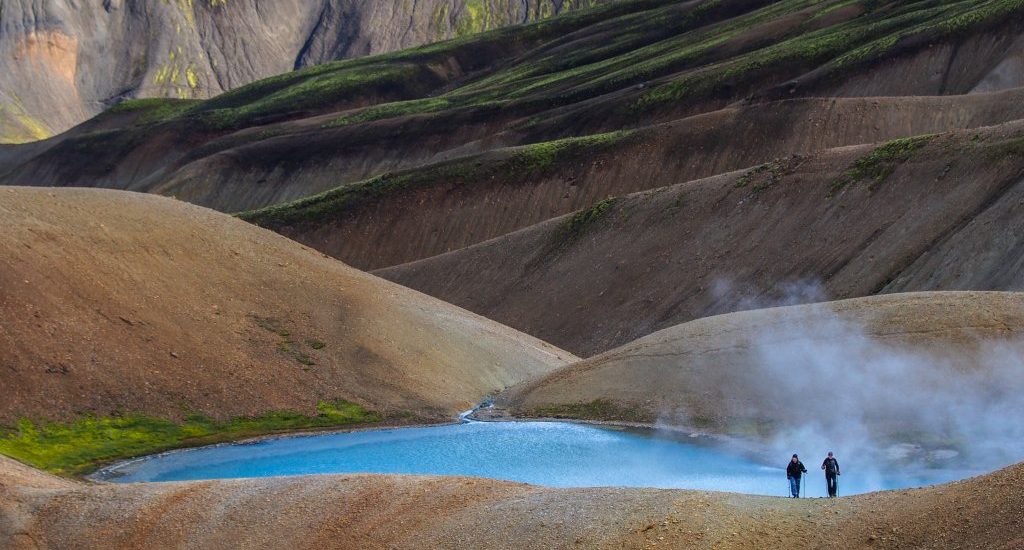
Thórsmörk, the Valley of Thor is named after the Norse God of Thunder. As you hike through the rugged terrain, the raw beauty surrounds you on all sides. The air, crisp and clean invigorates your senses filling you with wonder and excitement.
Grænihryggur
Grænihryggur is a rugged, wild place – a true testament to the power and majesty of nature. Its Emerald colored ridge is unique in the natural world, and the spectacular landscape isa place where you feel as if you have traveled to another world.
The Challenge
Hiking in Iceland is a test of your strength and determination. The rugged, untamed landscape, with its jagged peaks and massive ice fields, demand a certain fortitude of spirit. The weather is unpredictable and can turn on a moment’s notice. But it is precisely this challenge that makes the experience of hiking in Iceland so exhilarating, and the reward is unparalleled. From the towering peaks to the serene beauty of the glacial valleys, Iceland’s natural wonders are a sight to behold.
Get ready to challenge yourself on this exhilarating trek, where you’ll hike full days over rugged and uneven terrain. The route covers up to 13 miles and 8 hours of daily hiking through remote mountainous areas with unpredictable weather, and where temperatures can fluctuate between 41°F to 51°F. We will not be hiking to high altitude. Members should be able keep up with a fit group. To fully enjoy this adventure, excellent physical condition is essential, and previous hiking experience is an essential asset. Join us for an unforgettable journey into the heart of nature.
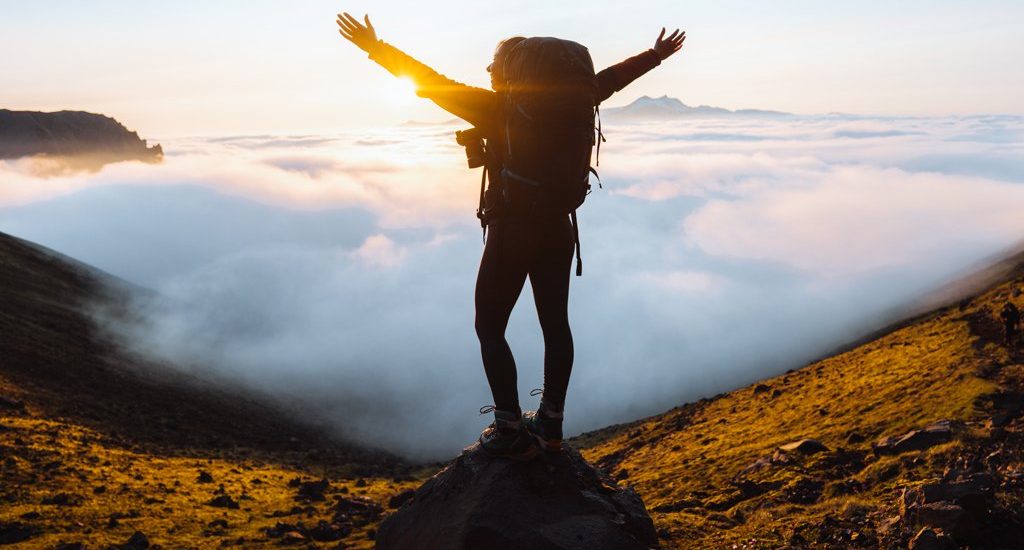
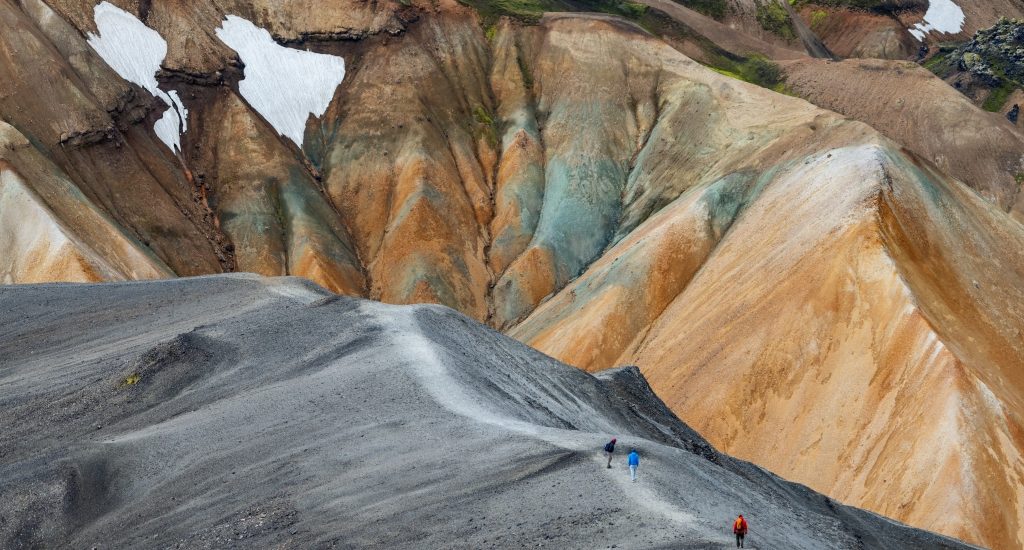
Iceland’s Natural Beauty
From the shimmering auroras in the night sky to the steamy lakes and hot springs that dot the landscape, there is always something to marvel at. The rugged terrain is a mix of towering mountains, deep fjords, and ancient glaciers, each more breathtaking than the last. No matter where you go, you are surrounded by an otherworldly beauty that takes your breath away. Whether you’re hiking through the wilderness or simply soaking in the natural hot springs, Iceland is a place that galvanizes you at every turn.
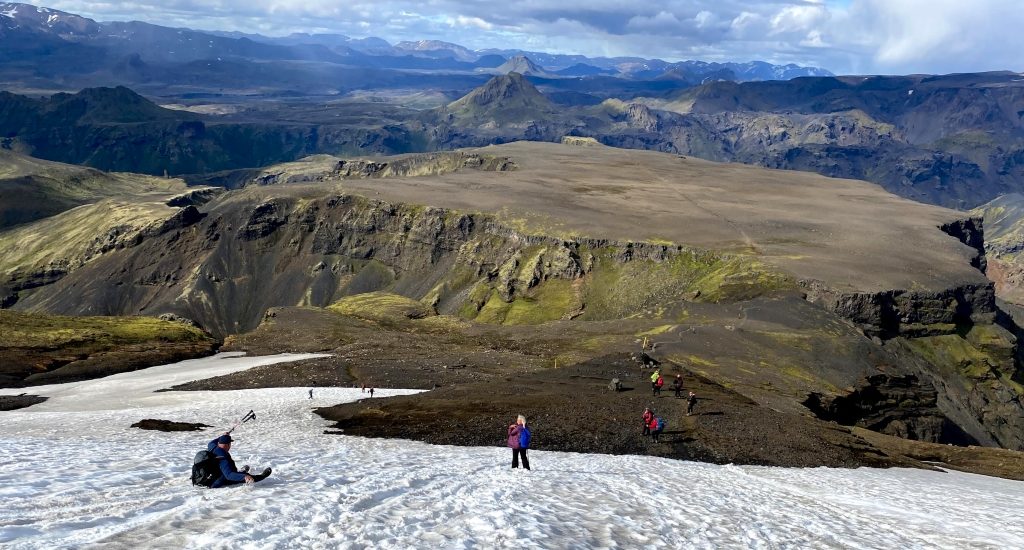
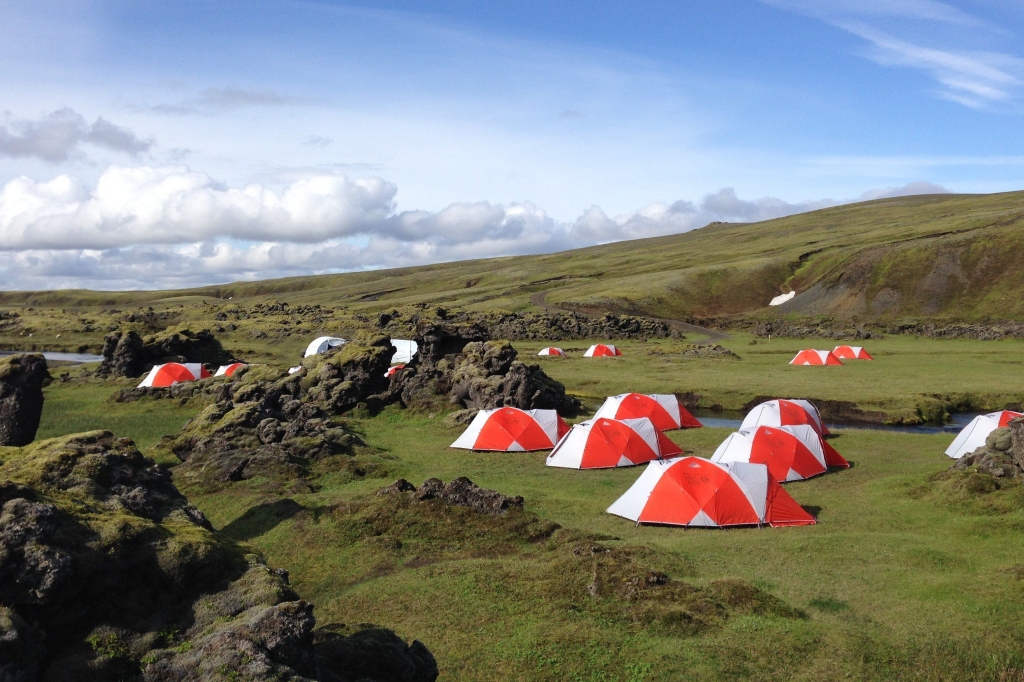
Lodging on the Trek
On your first and last night of the journey, we take a load off at the Hvolsvöllur Base Camp in Hvolsvöllur, a small village in southern Iceland. This trendy hotel/hostel boasts a friendly, communal atmosphere and an excellent restaurant, café, and bar. But the real draw is the rooftop sauna and hot tub – the perfect way to relax after a long day. Of course, during the trek itself, we’ll be roughing it in two-person tents, but the comforts of Midgard will be waiting for us when we return.
A Life-Changing Experience
As you make your way through the stunning landscape, you feel a sense of connection to the natural world that you’ve never felt before. The raw, untamed beauty of the terrain will takes your breath away, and the sense of adventure that comes with it will stay with you long after you’ve left. Whether you’re crossing the lava fields or soaking in the mineral baths, every moment spent in Iceland is a moment you’ll treasure for the rest of your life. The memories you ignite and the connections you make will stay with you always.
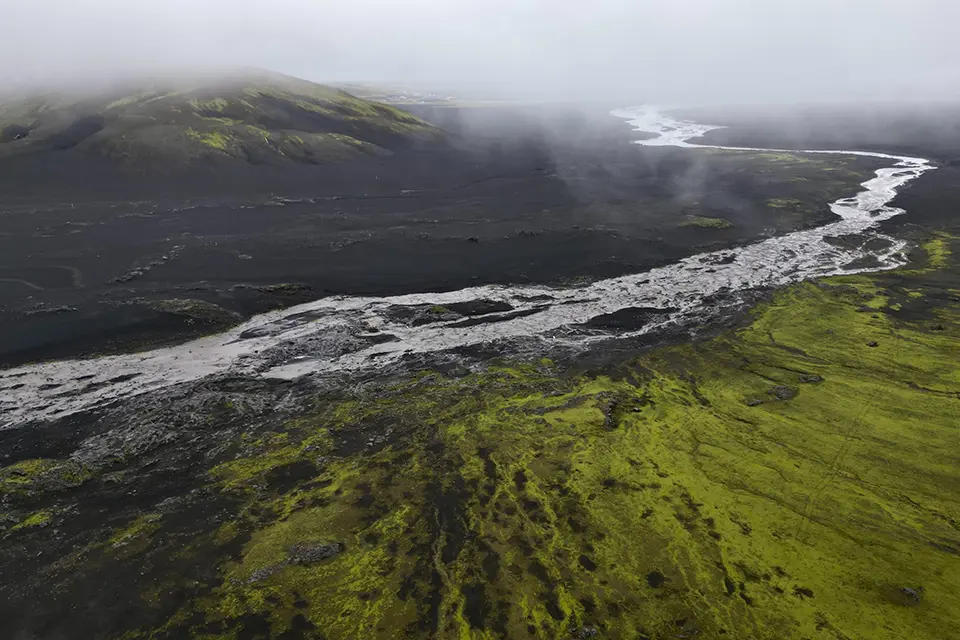
The Highlands
Of Iceland
This is a land of raw, untamed beauty. Towering glaciers stretch up towards the sky, while rugged mountain peaks cut jagged lines against the horizon. Pristine rivers wind their way through the valleys, carving deep gorges into the earth. In this wild and untamed landscape, one can truly feel the raw power of nature. The air is sharp and crisp, the silence broken only by the sound of the wind rushing through the mountains. It is a place of true wilderness, a land of adventure and discovery – a place where the raw beauty of nature reigns supreme.
Iceland’s Location & Seasons
Think about the location of Iceland on a map. Nestled between the North American and European continents, Iceland (63-67°N and 18-23°W) sits alone in the North Atlantic Ocean, with only Greenland to its west as a nearby neighbor. This small nation is situated just south of the Arctic Circle, a testament to its northern location and the extreme climate that it endures.
The Gulf Stream courses along the eastern and western coasts of Iceland, bringing a temperate climate to the region despite its frigid name. Due to its high latitude on the globe, Iceland experiences both the Midnight Sun the Polar Night, each year. It is also lies within view of the Aurora Borealis, also known as the Northern Lights, a testament to the country’s isolated location in the far reaches of the north.
Summer
Travel season arrives in Iceland during the summer, when witness the buzz of visitors in the capital city of Reykjavik. During the months of June and July, the Midnight Sun takes over, bringing almost constant daylight to the region. Temperatures during our trek in July range from 49°F (9°C) to 57°F (14°C).
Fall
During the autumn months of October through December, the Gulf Stream brings mild Atlantic air in contact with colder Arctic air, resulting in frequent overcast skies, driving wind and rain, and sudden weather shifts. This is also the rainy season in Iceland. Temperatures during this time range from 30°F (-1°C) to 50°F (10°C).
Winter
In the heart of winter, the Polar Nights bring a period of extended darkness to the region, making it an ideal time to view the Aurora Borealis (Northern Lights). Thanks to the warming effects of the Gulf Stream, winters in Iceland are typically milder than in other parts of the world. Temperatures during this season can range from 28°F (-2°C) to 36°F (2°C).
Spring
Spring brings new life to Iceland as the days grow longer and the first signs of green grass and flowers appear. The crisp, fresh air and longer periods of daylight create an invigorating atmosphere. As the ice and snow begin to melt, the landscape transforms, revealing the breathtaking beauty of Iceland’s rugged terrain. Temperatures range from 30°F (-1°C) to 48°F (9°C).
Trekking Itinerary
Day 1 – REYKJAVIK
Arriving in Reykjavik, the pulse of Iceland’s wild heart, we unload our gear at our hotel. The day is yours to roam, seeking adventure in this urban wilderness. Soaking in the mineral-rich waters of Sky Lagoon, feeling the volcanic heat soothe your soul, then feasting at the many eateries that satisfy both your hunger and your thirst for life. Reykjavik, a city with a spirit as free and untamed as the wild landscapes that surround it.
Day 2 – HVOLSVÖLLUR BASE CAMP
As we embark on this journey of discovery, you are met by our driver in the bustling city of Reykjavík. We travel through the wild and rugged landscape, to Hvolsvöllur Base Camp in the small village of Hvolsvöllur. Here, surrounded by volcanoes and breathtaking beauty, we prepare for our trek through the wilderness. Our expert guide assists us in checking our gear and sharing safety tips to carry us through the wild Icelandic highlands.
As the afternoon approaches, we explore our surroundings, perhaps taking a stroll through the village, marveling at the Lava Center, or dipping our toes in the local swimming pool. And as the evening approaches, we gather with our new companions, feasting on a traditional Icelandic dinner and bonding over tales of adventure.
Day 3-4 – LANDMANNALAUGAR
Hiking Distance: 10-12 Miles (16-20 km)
Ah, the morning ritual of sustenance, preparing for a day of adventure in the wilds of the highlands. We fuel up with a hearty breakfast, packing our own food for the journey. And then, we set off in our trusty four-wheel drive, embarking on a scenic drive through the rugged landscape. As we reach the holy grounds of Landmannalaugar, we are greeted by the inviting trails that wind their way through the wilderness. Our guide, a seasoned veteran of the highlands, leads us on the best route through the wilds, choosing wisely based on the weather and the conditions of the terrain.
On our second day here, we roam the breathtaking landscape of Landmannalaugar on a full day’s hike spanning 10-12 miles. After a hard day’s trek, we return to camp to soak our weary bodies in the hot springs, before indulging in a well-deserved dinner.
As the day draws to a close, we return to camp, grateful for the natural hot springs that beckon us for a soak that feeds mind, body and soul. And then, as night falls, we gather around to prepare a hearty meal, nourished by the day’s adventures and ready to rest our weary heads.
Day 5 – ÁLFTAVATN
Hiking Distance: 12 Miles (20 km) – Elevation gain: 3,300 ft. (1,000 m)
Wake up, adventurer! It’s time to greet the day in Landmannalaugar, packing up our camp before fueling up with breakfast. Today, our luggage transporter takes our gear to new parts of the highlands. As we embark on the fabled Laugavegur Trail, we brave the rugged green mossy lava fields, scaling the slopes of Brennisteinsalda mountain and ascending to the colorful plateau. We pass by Stórihver the striking geothermal hot spring and conquer the majestic Jökultungur mountain.After a full day of heart-pumping hiking, we come together for dinner at Álftavatn, setting up camp for the night before drifting off into a well-deserved slumber.
Day 6 – KRÓKUR
Hiking Distance: 7.2 Miles (12 km) – Elevation gain: 1,650 ft. (500 m)
Rise and shine, fearless hiker! It’s time to wake up, pack up, and embark on an off-trail adventure. We hike along the picturesque Álftavatn lake, heading towards the great canyon of Torfahlaup and the remote Krókur region. Along the way, we traverse mossy fields, skirt massive rivers, and marvel at the stunning multi-colored mountains. Today’s hike is a bit less strenuous than previous days, so in the afternoon we set up camp in the beautiful Krókur camp ground. After setting up camp, we cook up a hearty dinner and, if we have the energy, perhaps even embark on a short evening hike.
Day 7 – EMSTRUR
Hiking Distance: 9.6 Miles (16 km) – Elevation gain: 3,300 ft. (1,000 m)
After a hearty breakfast, we pack our lunch and set off into the wilds of Krókur. We leave the beaten path behind, forging our way through Þverárbotnar and on to the majestic canyon, Markarfljótsgljúfur. And what awaits us after that, you might ask? Why, none other than the awe-inspiring Mýrdalsjökull, the fourth largest glacier in all of Iceland.
Our campsite for the night is the lush and welcoming Emstrur Botnar, near the glacier. It’s a verdant oasis teeming with fellow trekkers from every corner of the globe. As the sun sinks, we gather for a delicious dinner before embarking on an evening hike to the breathtaking Markarfljótsgljúfur canyon. It’s a sight to behold, a true gem of the Icelandic landscape that will take your breath away.
Day 8 – THÓRSMÖRK
Hiking Distance: 10.5 Miles (17 km) – Elevation gain: 2,625 ft. (800 m)
We set out and reconnect with the legendary Laugavegur Trail, a path that takes us through a landscape of breathtaking beauty. Our feet trudge through glacial moraine, over fields of black lava sand, through stands of birch forests, and at last, we arrive at the magical Thórsmörk. This place, known as the home of Thor, the Thunder God, is a beloved destination for hikers in Iceland. We make this stunning location our home for the night, basking in its natural wonders and the powerful energy of the gods.
Day 9 – HVOLSVÖLLUR BASE CAMP
Hiking Distance: Flexible
Today, we embark on a journey through the wild and untamed wilderness of Thórsmörk. With endless options for hiking and exploration, we’ll let the weather and our own boundless energy guide us.
Thórsmörk is a place to slow down, to drink in the beauty of nature and savor every moment. We’ll pick juicy berries straight from the vine, marvel at the local wildlife, and take in breathtaking views as we rest and recharge with a refreshing, ice-cold beer.
As the afternoon approaches, we’ll be picked up and whisked away to Hvolsvöllur Base Camp, with thrilling stops along the way. And when we finally arrive at Base Camp, we’ll soak our weary muscles in the rooftop hot tub and sauna, before indulging in a hearty, homemade meal and raising a glass to our amazing trek through the rugged, majestic beauty of the Icelandic Highlands. Cheers to adventure!
Day 10-11 – REYKJAVIK
Today marks the end of our epic journey, but we’re not going out without a bang. After a leisurely morning of packing up and a delicious breakfast, we hit the road for Reykjavik, with exciting stops and shorter hikes along the way.
This day is all about flexibility – we go with the flow and make the most of every moment. And as we enter the bustling city, we bid each other a fond farewell and go our separate ways, armed with unforgettable memories of our incredible adventure.
On the last day you fly home, or continue with your own travel.
Photo Gallery
